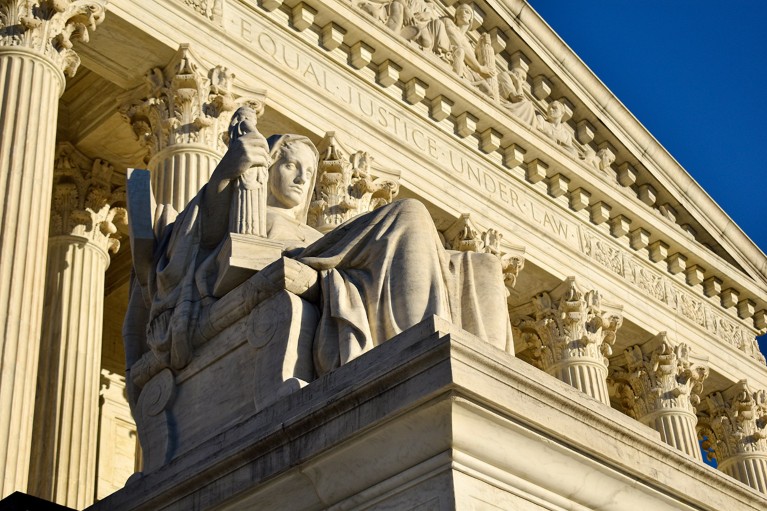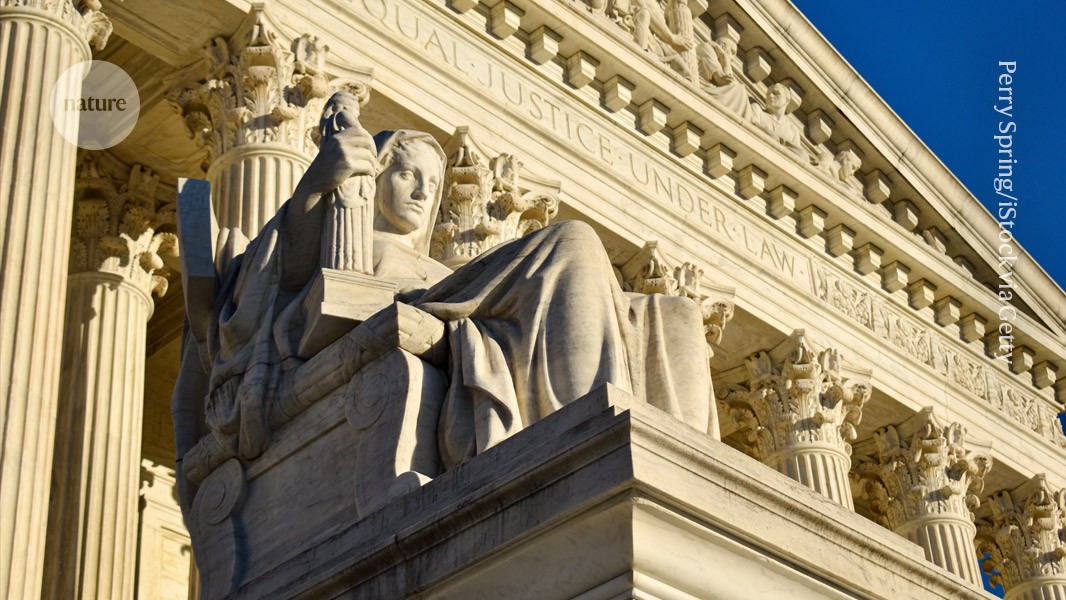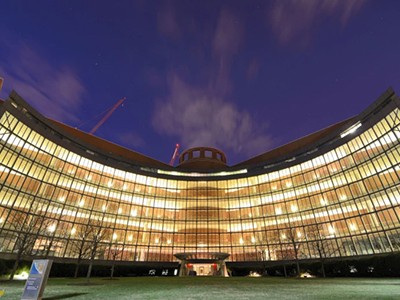
The US Supreme Court has ruled that the administration of President Donald Trump can go ahead with cuts to active research grants.Credit: Perry Spring/iStock via Getty
The US Supreme Court has derailed researchers’ efforts to reinstate almost $2 billion in research grants issued by the National Institutes of Health (NIH). The court’s decision on Thursday represents a remarkable reversal, allowing the administration of US President Donald Trump to proceed with science cuts it began in late February.
‘We were ready for this’: meet the scientists suing the Trump administration to reinstate terminated grants
In a divided decision, the high court held that lawsuits filed by researchers to reinstate grants should have been reviewed by a court specializing in contracts, rather than the district court they were filed in. But the Supreme Court narrowly ruled that the district court could review the NIH’s guidelines used to make the grant terminations and left in place the lower court’s order that the guidelines are illegal and should not be used. The lower court said in June that the grant cuts made by the Trump administration in relation to diversity, equity and inclusion (DEI) amounted to racial discrimination.
Although the Supreme Court ruled partially in the researchers’ favour, some scientists say the decision amounts to a de-facto win by the Trump administration, because the time and cost of challenging their terminations in a different court will be prohibitive. And it could spell doom for other legal efforts, such as one by a group of University of California researchers, to reinstate their funding from other agencies such as the US National Science Foundation.
“In a scientific sense, this is a total loss,” says Jenna Norton, a programme officer at the National Institute of Diabetes and Digestive and Kidney Diseases, which is part of the NIH. “The trust and certainty that is so critical to successfully conduct research has been completely obliterated by this ruling.”
“What the court made clear yesterday is, if your grants get cut, you’re not going to be able to get any effective remedy for it,” says Samuel Bagenstos, who until December was the top lawyer for the NIH’s parent agency, the Department of Health and Human Services.
Neither the NIH nor the researchers who led the lawsuit against the agency responded to Nature’s queries about the ruling.
Legal challenges
Early this year, the NIH began terminating thousands of research grants related to a plethora of topics disfavoured by the Trump administration, including DEI, HIV/AIDS and COVID-19. An analysis by Nature found that the cuts have razed entire fields of study, such as investigations into the health of transgender people. This loss of billions of dollars of funding has led dozens of research institutions, such as Stanford University in California, to lay off staff members.
Judge rules against NIH grant cuts — and calls them discriminatory
Several US states, researchers and organizations that represent scientists filed lawsuits challenging the NIH’s cuts in early April, arguing that the terminations were illegal because the agency — the largest funder of biomedical research in the world — did not follow proper procedures and did not give adequate reasoning for cancelling the grants.
In June, judge William Young of the US District Court for the District of Massachusetts in Boston ruled that the NIH guidelines used to terminate the grants and about 800 of the terminations, including those related to DEI, were illegal. “I’ve been on the bench for 40 years — I’ve never seen government racial discrimination like this,” Young said at a hearing announcing his decision.
The next month, a three-judge appeals-court panel unanimously denied the Trump administration’s request to halt Young’s ruling, noting that the cuts would delay lifesaving research by years, if not decades. The government then filed an emergency petition with the Supreme Court.
A court divided
The case divided the Supreme Court’s nine justices, three of whom were appointed by Trump, leading to an unusually fractious 36-page emergency ruling.




